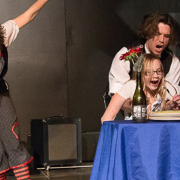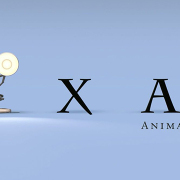Making things Interesting – The Act Without Skills Test
“Thom, how do you make a good routine?”
That’s one of the questions I’m often asked when I’m coaching at NECCA.
Unfortunately for the students who ask, there’s no one clear way. “Interesting” is a difficult — if not impossible — attribute to measure. There are, however, different ways to look at routines and pick apart different aspects of their presentation. Here’s one of my favorite ways to dissect choreography:
The Act without Skills Test
Variety performance inherently relies on unique skills and props to create an act. Relying on skills or props alone can sometimes be a crutch to performers – the “Act without Props Test” requires that the performer run through their act’s choreography without the skills or props that they rely on.
The idea is simple – if an act’s choreography can hold an audience’s interest without any of the skills it was written with, won’t it be that much stronger when the choreography is done with the skills as well? Think of it as a melody being hummed, compared to a melody being performed by a full orchestra. If it’s strong in the simplest form, it should be strong in its fully rendered form. By stripping an act down, we are forced to focus on the tempo, the character, and a host of other elements often overlooked in favor of the tricks and skills.
Let’s use juggling as an example. A young juggler approaches his director, asking why his routine isn’t very strong. It is extremely technical, well polished, and captures the attention of jugglers all over. Other audiences, however, haven’t been as interested.
We’ve all seen the act – the juggler stands centerstage, and juggles three balls. He moves on to four, five, and seven. Then he runs back to his prop stand and swaps the balls out for clubs. Three, four, five club juggling. He runs back and swaps the clubs out for rings. Three, four, five, six, seven, and eight. He takes a bow, and runs off stage.
If you like juggling for the sake of juggling, then this act was probably great! If you’re like the rest of the world, you probably looked at the person for cues about how he was feeling, what he was thinking, or why he was doing it at all.
This exercise strips the juggler of his equipment, and has him “mark” the act in real time with his music. (He’ll probably protest. Lock his equipment in the closet until he agrees to do it!)
Watch for movement around the stage, for facial expressions, for pacing and tempo within the body. How does the performer breathe on stage? Is the act interesting to watch when the “meat” of the act isn’t there?
The juggler in our example spent minutes at a time standing center stage, facing the audience, in a fully upright position. This stance was punctuated with short sprints to his table in the back, where he picked up new equipment before returning to his starting position. Not a very interesting act without the technique.
So, what can we do to make it a little more interesting to watch?
The juggler should reblock his routine to hit more places around the stage. If you’re having a hard time figuring out what to do where, pick an arbitrary shape and see what happens. I like to have jugglers working with this exercise to pick a letter of the alphabet, then trace that out during one of their sequences. We’ll run that arbitrary blocking a few times, then add the props back in. We record it, watch it, and pick through it to see if something jumps out as interesting to watch. We keep the new part, and keep playing with the rest of the sequence. When you devise material this way, it’s easier to step back and look at the altered routine with a sense of equanymity – noone’s feelings get hurt when you cut material.
How about pacing? In our example, the juggler did tricks one after another – back to back to back to back. The juggler should look at their tempo. Is it so even that they’re unwittingly putting their audience to sleep? I like to have students pick a series of tempo-related descriptors. “Molasses-slow!” “Stop-and-Go!” “As fast a possible, then stop!” Once they come up with a few different words, they’re tasked with taking a sequence and finding a home for each one of them. A standard pattern is changed with some stops and starts, a dash to pick up a ball on the floor is turned into a slow-motion walk. — and all of these changes help make the core of the choreography more interesting.
This exercise certainly doesn’t pretend to be a cure-all for routines. If you’re looking for a new perspective on your act, though, perhaps this will help you out.
Do you have an exercise you use to change things up? Comment below!
Addendum for Aerialists
A lot of folks messaged me after this post was published, asking how it might apply to aerial acts. How can you mark through an act on a vertical apparatus, like silks or rope? What about something like static trapeze?
Here’s a challenge for my aeralist friends:
Next time you rehearse, try doing it in the middle of a room, sitting on a bar stool. Instead of the skills (climbing, dropping, suspended in a pose in the air,) what can you do to hold attention while isolated in one fixed point, like a stool? You’ll have to play with emotional textures, viewpoints, movement, and other non-athletic aspects of performance.
The bottom line of it all is this – the skills themselves only represent a small portion of the act. Lose the skills for a few rehearsals and focus on the rest. You’ll come away with a much fuller piece as a result.






This is so great! Spot on!!
Great! Please keep sharing your ideas and techniques.